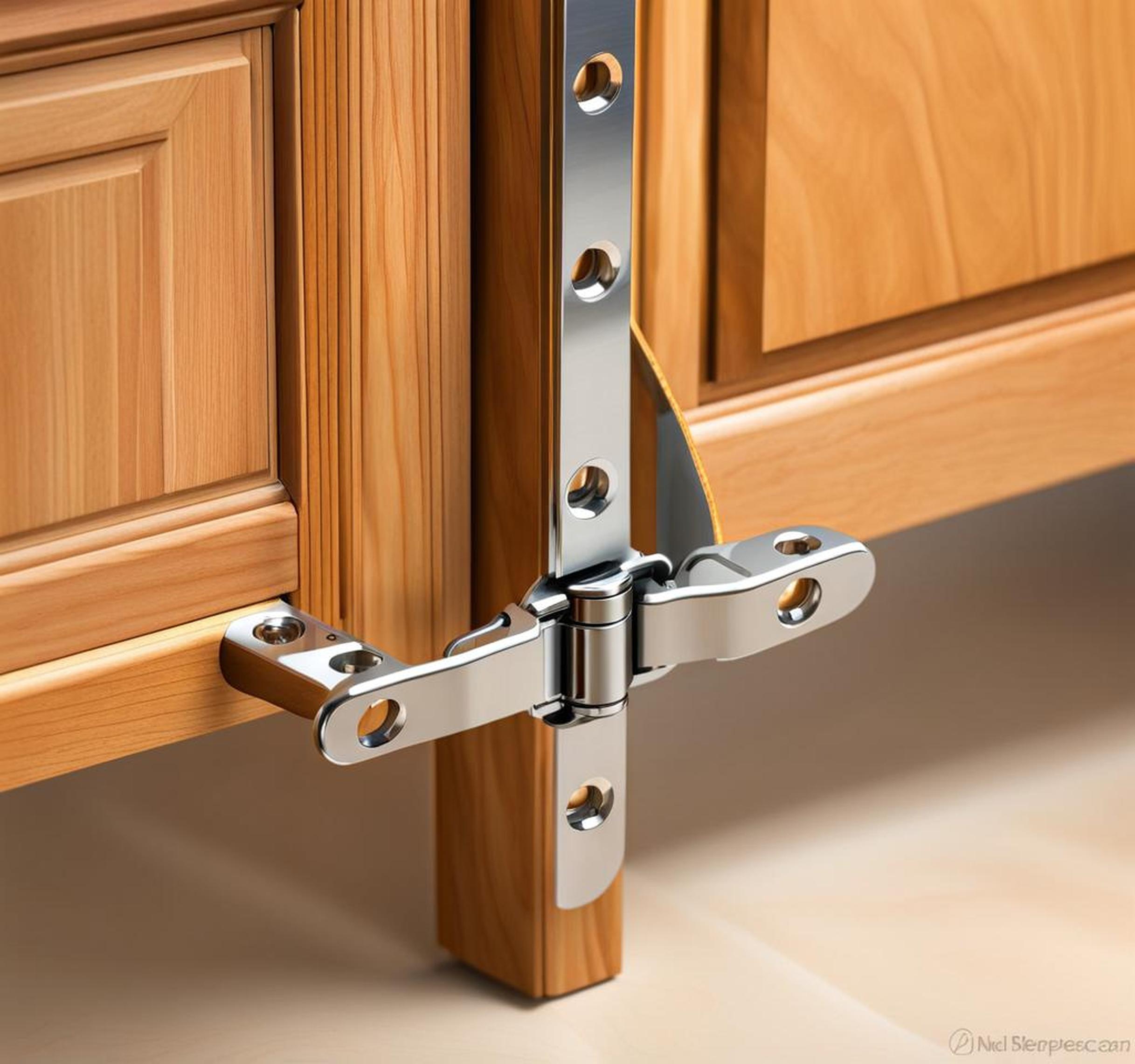Installing or replacing kitchen cabinet hinges may seem simple, but choosing the right hinge type and size for your cabinets can impact aesthetics and functionality.
Types of Cabinet Hinges
Concealed Hinges
Concealed, also called European, hinges are the most popular style used in modern kitchens today. As the name suggests, these hinges are completely hidden from sight by the cabinet door when closed. They come in three main types:
- Full Overlay: The cabinet door fully overlaps the cabinet frame.
- Half Overlay: The door partially overlaps the frame by roughly half its depth.
- Inset: The door sits flush within the frame, not overlapping at all.
Concealed hinges allow for a smooth, seamless look and also enable full access to cabinet interiors unlike older hinge styles. Many feature adjustable screws for precision alignment.
Specialty Hinge Types
Some other common modern hinge varieties include:
- Soft-close: Integrated mechanisms ensure smooth, quiet closure.
- Self-closing: Spring-loaded functionality makes doors close automatically.
- Push-to-open: Touch-latch operation makes handles unnecessary.
Hinge Measurements
Opening Angle
The opening angle determines how far a cabinet door can swing open. Most concealed hinges allow angles ranging from 95deg to 110deg. Consider your kitchen layout–do you need wide door clearance for accessibility? Narrower angles can work well for corner cabinets or in tight spaces.
Mounting Plate
Concealed hinges come in clip-on or slide-on mounting varieties:
- Clip-on: Hook onto a cabinet frame plate for easier installing and removal.
- Slide-on: Slide onto a mounting plate that is screwed into the cabinet frame permanently.
Hole Size
The standard hole size for concealed cup hinges is 35mm. But some use smaller 26mm or larger 40mm holes. Check hole sizes before drilling to determine if existing hinge hardware is compatible or must be replaced.

Hinge Materials
Stainless steel offers durability at an economical cost. Solid brass provides a classic, warm look. And nickel is smooth with a subtle sheen. Most concealed hinges utilize steel construction with optional plating finishes.
Hinge Features
Adjustability
High-quality concealed hinges allow 3-way or 2-way adjustment via built-in screws for precision door positioning:
- 3-way: Horizontal, vertical and depth shifts
- 2-way: Horizontal and vertical alignment only
Noise Reduction
Options like integrated silencers inside hinge cups or dampened movement mechanisms ensure smooth and quiet operation when opening and closing doors.
Installing Cabinet Hinges
New Cabinet Installation
When installing new cabinets and doors, concealed hinges can be mounted using the following process:
- Mark hinge locations on cabinet frames.
- Drill cup holes at marked points.
- Fasten hinge mounting plates into the holes.
- Attach hinge cups to cabinet doors via screws.
- Snap hinged doors onto mounting plates.
- Adjust hardware as needed.
Replacing Old Hinges
For kitchen remodels, filling old hinge holes and retrofitting new hardware takes a bit more work. Filler kits and larger cover plates can address installation issues like gaps or misalignments.
Style Considerations
Finish Options
Concealed hinges come in an array of finishes – painted, faux woodgrain, polished chrome, oil-rubbed bronze or matte black to coordinate with your cabinetry style.
Aligning doors perfectly flush may require minor hinge adjustments. Cup position toward door tops keeps gapsminimal. Maintaining consistent spacing between door edges gives a built-in custom appearance.
Selecting the ideal concealed hinges for your new or renovated kitchen is easy if you know what you want. The proper hardware paired with accurate alignment will lend a refined yet understated elegance.
